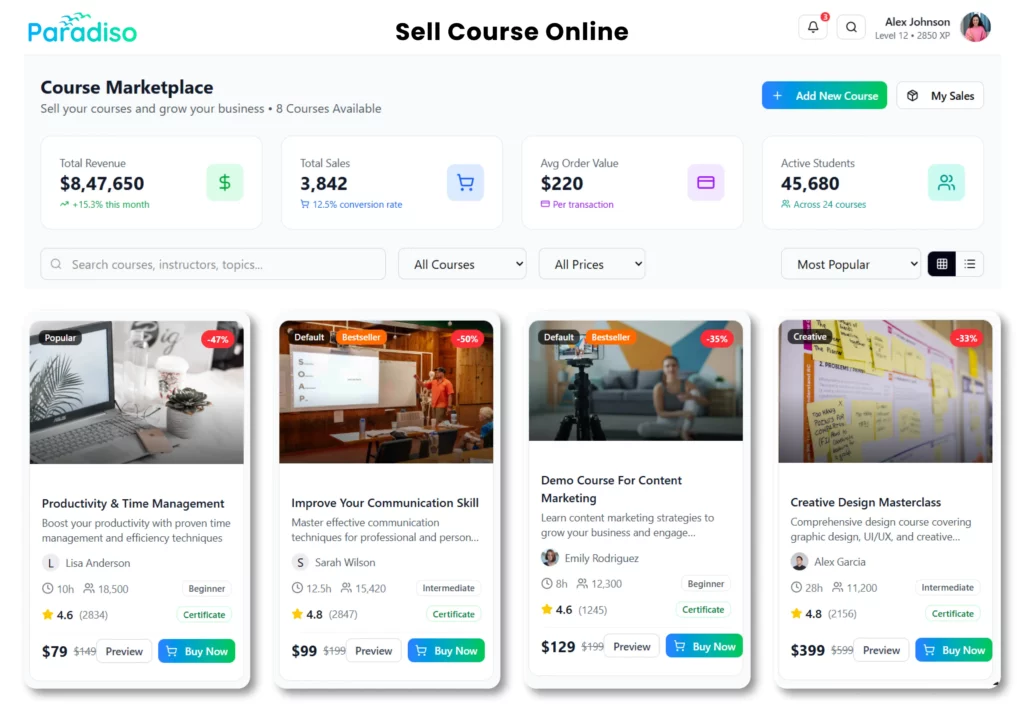In recent years, eLearning has experienced significant growth, becoming one of the most popular ways for individuals to acquire new skills, enhance their knowledge, and further their education. The COVID-19 pandemic has also accelerated this trend, with more and more people turning to eLearning to continue their education and training remotely. As a result, eLearning has become an essential tool for businesses, educational institutions, and individuals worldwide. In this context, staying up-to-date with the latest eLearning trends has become crucial for anyone who wants to thrive in this digital age.
According to a report published by ResearchAndMarkets, the global eLearning market is expected to grow from USD 144 billion in 2019 to USD 374.3 billion by 2026 at a Compound Annual Growth Rate (CAGR) of 14.6% during the forecast period. This significant growth is mainly driven by the increasing demand for cost-effective training and development solutions, the rising adoption of smartphones and other mobile devices, and the growing popularity of gamification and microlearning.
As the eLearning landscape evolves, new trends are emerging, and existing ones are evolving. It’s essential to keep up with these trends to stay ahead of the curve. In this article, we will explore the top 10 eLearning trends shaping online education’s future, based on recent research and industry data.
In this blog, we will explore the top 15 eLearning trends that will dominate in 2023, revolutionizing how we deliver and consume online education.
15 eLearning Trends 2023: To Watch Out
Microlearning and Bite-sized Content
Microlearning, characterized by delivering content in short, focused bursts, will continue to gain momentum. Learners prefer bite-sized modules that are easy to consume and fit into their busy schedules. Microlearning improves engagement and knowledge retention and enables targeted learning experiences.
Personalized Learning Paths
Personalized learning paths are becoming increasingly popular, allowing learners a tailored educational experience. By leveraging data analytics and artificial intelligence, eLearning platforms can deliver customized content, assessments, and recommendations based on learners’ needs and preferences.
Mobile Learning
Mobile learning has become a necessity in today’s fast-paced world. With the widespread availability of smartphones and tablets, learners expect the flexibility to access learning materials anytime, anywhere. Responsive design and mobile apps are essential for delivering seamless eLearning experiences on multiple devices.
Gamification and Immersive Experiences
Gamification techniques like badges, leaderboards, and rewards continue to engage and motivate learners. Additionally, immersive technologies like virtual reality (VR) and augmented reality (AR) offer interactive and experiential learning, enabling learners to practice real-world scenarios in a safe environment.
Artificial Intelligence and Machine Learning
Artificial intelligence (AI) and machine learning (ML) are revolutionizing eLearning. AI-powered chatbots provide instant support and guidance to learners, while AI algorithms analyze learner data to deliver personalized recommendations. Machine learning enables adaptive learning, automatically adjusting content and pacing to individual learner needs.
Social Learning and Collaborative Tools
Social learning promotes collaboration and knowledge sharing among learners. Online discussion forums, video conferencing, and collaborative tools enable learners to interact with peers, instructors, and subject matter experts, fostering a sense of community and enhancing learning outcomes.
Data-driven Learning Analytics
Learning analytics provide valuable insights into learner behaviour, progress, and performance. With the help of advanced analytics tools, educators can identify knowledge gaps, track learner engagement, and make data-driven decisions to improve course design and delivery.
Adaptive Learning
Adaptive learning utilizes AI and data analytics to personalize learning experiences based on learners’ strengths, weaknesses, and learning styles. It dynamically adjusts the content and pace of instruction, ensuring that each learner receives appropriate support and challenges.
Video-based Learning
Video-based learning remains a powerful tool for engaging learners. Short instructional videos, tutorials, and interactive video assessments capture learners’ attention and facilitate better comprehension of complex concepts.
Virtual and Augmented Reality
Virtual and augmented reality technologies offer immersive learning experiences. Learners can explore virtual environments, interact with virtual objects, and practice real-life scenarios. These technologies are particularly valuable for technical training and simulations.
Blockchain for Credentialing and Certification
Blockchain technology provides a secure and decentralized system for verifying and sharing learner credentials and certifications. It ensures transparency and eliminates the risk of fraudulent qualifications, making it easier for learners to showcase their skills and achievements in the job market.
Personal Learning Assistants
Personal learning assistants powered by AI help learners navigate through their learning journey. These assistants provide personalized recommendations, track progress, and offer proactive support, enhancing the learning experience.
Data Privacy and Security
As the importance of data privacy and security grows, eLearning platforms must prioritize safeguarding learner information. Compliance with data protection regulations and implementing robust security measures are crucial to maintaining trust and confidentiality.
Collaborative Learning Spaces
Both physical and virtual collaborative learning spaces facilitate group activities and peer-to-peer interaction. Learners can work together on projects, share ideas, and learn from each other, fostering a collaborative and supportive learning environment.
Continuous Learning and Micro-credentials
The concept of lifelong learning is gaining traction, with learners seeking continuous skill development. Micro-credentials, such as digital badges or nano degrees, allow learners to acquire specific skills and knowledge quickly, contributing to their professional growth.
Final thoughts-
As we look ahead to 2023, these 15 eLearning trends promise to shape the future of online education. From microlearning and personalized learning paths to AI-powered tools, immersive technologies, and data analytics, these trends can enhance engagement, improve learning outcomes, and create genuinely transformative learning experiences. By embracing these trends, eLearning professionals can stay at the forefront of the industry and deliver high-quality education that meets the evolving needs of learners.
























